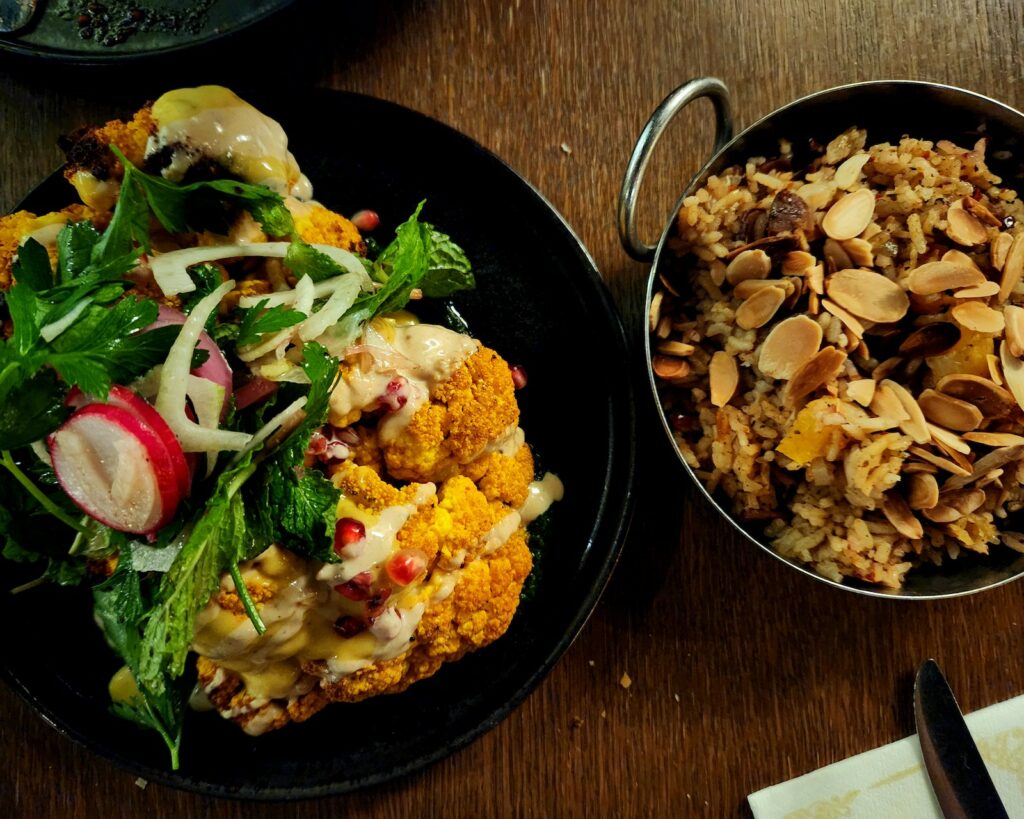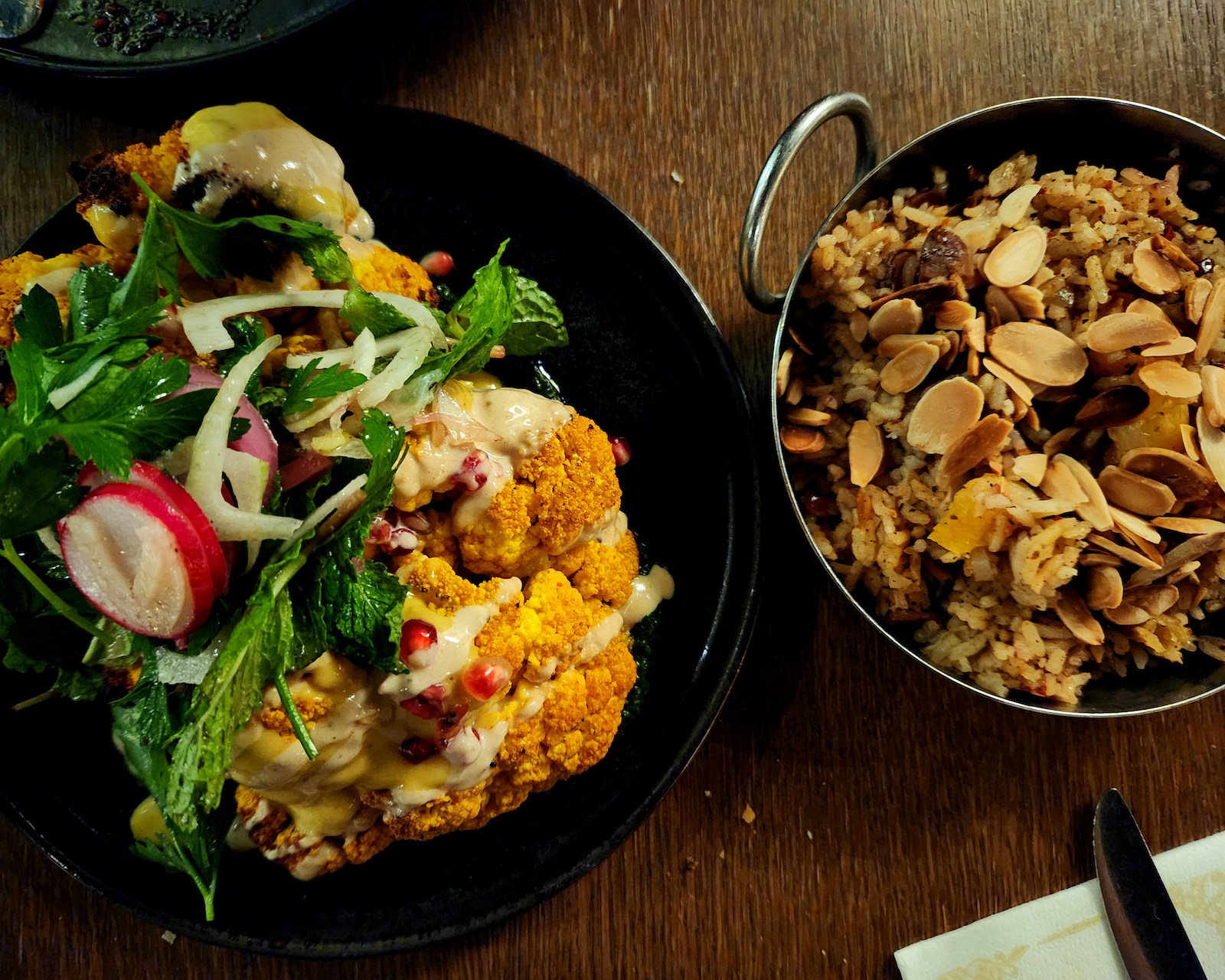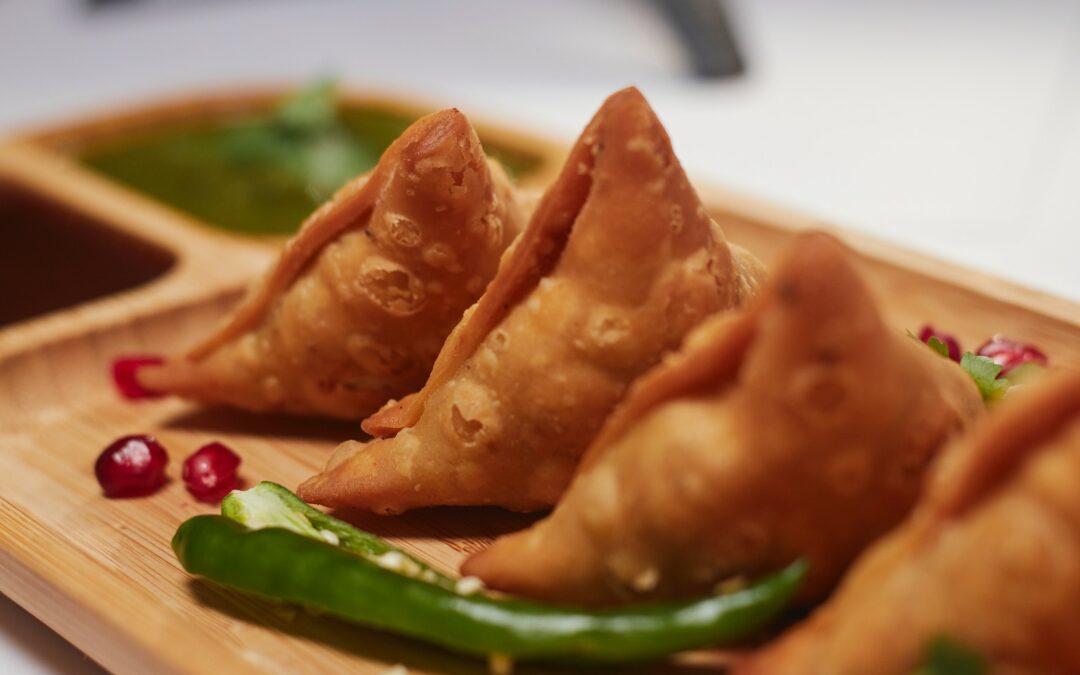
Elevate Your Meals with Plant-Based Elegance
Embarking on a journey through gourmet vegan cuisine reveals a world where the richness of flavors, textures, and colors knows no bounds. Plant-based cooking has ascended to the realm of fine dining, presenting delicious opportunities for both seasoned chefs and food enthusiasts alike. Vegan dishes, once thought to be restrictive, now offer a canvas for creativity that can satisfy even the most discerning palates.
Diving into the art of vegan cooking, one discovers a treasure trove of ingredients that transform traditional meals into plant-based masterpieces. Gourmet vegan dishes are not merely about subtraction – the absence of meat and dairy – but about the skillful addition of herbs, spices, and innovative substitutes to enhance the natural goodness of vegetables, fruits, grains, and legumes. These meals champion the idea that plant-based eating can be both a culinary adventure and a delightful indulgence.
In the modern kitchen, vegan recipes are far from monotonous; they are as diverse as the reasons people choose to follow a plant-based lifestyle. Whether motivated by health, sustainability, or ethical considerations, chefs are continually crafting delectable vegan creations that offer a gastronomic experience to remember. These dishes burst with layers of flavor that promise a gourmet feast designed to delight the senses and nourish the body.
The Foundations of Vegan Cooking
Embarking on a gourmet vegan culinary adventure requires a mastery of foundational principles and a pantry stocked with essential ingredients. Vegan cooking is not just about substituting animal products but also about enhancing flavor, understanding nutrition, and creating dishes that are satisfying and complex in taste.
Essential Ingredients for Gourmet Vegan Meals
A well-curated selection of plant-based ingredients is the cornerstone of creating gourmet vegan meals that are both nutritious and delicious. Below is a list of staple items that should find their way into the kitchen of a home chef focused on vegan cuisine:
- Proteins: Legumes (beans, lentils, chickpeas), tofu, tempeh, and seitan.
- Nuts and Seeds: Almonds, cashews, flaxseeds, and chia seeds.
- Whole Grains: Quinoa, brown rice, farro, and millet.
- Healthy Fats: Avocado, olive oil, and coconut oil.
- Umami Enhancers: Nutritional yeast, soy sauce, and mushrooms.
- Herbs and Spices: Basil, cumin, turmeric, and smoked paprika.
These ingredients do more than just fill the void left by meat and dairy; they bring their own unique flavors and textures to vegan recipes, allowing for a diverse and satisfying taste experience.
Understanding Plant-Based Nutritional Values
Nutrition is a critical aspect of gourmet vegan cooking. Chefs must ensure that their dishes provide a balance of macronutrients (proteins, carbs, and fats) and micronutrients (vitamins and minerals). Here are key nutritional considerations in vegan cooking:
- Protein: Essential for muscle repair and growth. Found in legumes, soy products, and quinoa.
- Calcium: Vital for bone health. Available in fortified plant milks, tofu, and leafy greens.
- Iron: Crucial for blood health. Abundant in lentils, chickpeas, and spinach.
- Vitamin B12: Required for nerve function and found exclusively in animal products but can be sourced from B12-fortified foods or supplements for vegans.
By combining various plant-based ingredients, chefs can not only achieve the full spectrum of essential amino acids but also ensure that their vegan recipes are both nutrient-dense and palatable. For example, the inclusion of ingredients rich in umami, like mushrooms and nutritional yeast, can satisfy the taste for depth and savoriness often associated with meat-based dishes. Intelligent use of spices and culinary techniques can elevate vegan ingredients to create complex flavors in gourmet vegan dishes, making vegan cooking an exciting and rewarding endeavor.
Diverse Vegan Recipes and Dishes
In exploring the world of plant-based cuisine, one finds an array of vibrant and nourishing dishes. From hearty entrees to sweet indulgences and energizing morning bites, the variety in vegan cooking is truly remarkable.
Satisfying Main Courses
In the realm of vegan main courses, creativity shines through dishes that are both filling and flavorful. One might enjoy the richness of a vegan version of “Bacon” Wrapped Scallops with Paprika Sauce, which pairs perfectly with mashed potatoes or a fresh salad. Then there are dishes like the Bombay Burritos, also known as FRANKIES, a favorite street food from India reimagined with curry mashed potatoes and roasted cauliflower wrapped in a soft tortilla.
- ‘Bacon’ Wrapped Vegan Scallops with Paprika Sauce: Salty, savoury, and slightly smoky, served with mashed potatoes or a side salad. Gourmet Vegan Recipes For Fine Dining At Home
- Bombay Burritos (FRANKIES): Curry mashed potatoes, roasted cauliflower, and chickpeas, with fresh spinach, cilantro mint chutney and pickled onions in a tortilla. Mouthwatering Vegan Dinner Recipes
Delectable Vegan Desserts
Desserts in the vegan world are as delectable as they are diverse, proving that indulgence doesn’t require animal products. Among the best vegan recipes for desserts, you’ll find treats like rich, dairy-free chocolate cakes and seasonal fruit tarts that satisfy any sweet tooth.
- Chocolate Cake: Rich, velvety, and completely dairy-free. Vegan Recipes That We Just Love for Dinner
- Seasonal Fruit Tart: Utilize fresh, local produce for a light and refreshing dessert. 103 Vegan Recipes for Delicious Plant-Based Meals
Wholesome Vegan Breakfasts and Brunches
Morning meals get a vibrant makeover with wholesome vegan breakfasts and brunches. They often feature an assortment of veggies in colorful dishes like smoothie bowls topped with seeds and vegan omelets stuffed with fresh greens, ensuring that diners start their day with a nutritious and energizing meal.
- Smoothie Bowls: Packed with fresh fruits, vegetables, and topped with nutrient-dense seeds. Best Plant-Based Recipes | Vegan Recipes
- Vegan Omelets: Fluffy and flavorful, filled with an array of sautéed veggies. 103 Vegan Recipes for Delicious Plant-Based Meals
International Flavors in Vegan Cuisine
Vegan cuisine offers a diverse palette of flavors from all corners of the globe, turning traditional dishes into plant-based delights. From the Middle East’s hearty falafel to Italy’s comforting vegan minestrone, international vegan cuisine is both rich and varied.
Exploring Vegan Dishes from Around the World
International vegan cuisine showcases a tapestry of tastes and ingredients. Falafel, a Middle Eastern staple, is made of spiced chickpeas, herbs, and formed into balls or patties that are often deep-fried to achieve a crisp exterior and soft, flavorful interior. They make for a protein-rich meal or snack and pair well with tangy tahini sauce.
Moving from the Middle East to Italy, vegan minestrone stands out as a versatile soup filled with vegetables, beans, and pasta, simmered in a savory tomato broth. Each region of Italy puts its own spin on this classic, allowing vegans to enjoy the comforting flavors that have made it a staple in Italian cuisine.
An array of vegan options bursts forth from the varied spice-filled cuisine of India. Vegetable curry, which can include a mix of potatoes, peas, bell peppers, and tomatoes, is enriched with spices such as cumin, coriander, and garam masala, offering a symphony of warmth and comfort.
Fusion Vegan Culinary Creations
Fusion dishes blend the essence of different culinary traditions to create innovative plant-based offerings. Vegan lasagna, for instance, combines the classic Italian layers of pasta with vegan cheese alternatives and rich tomato sauce, proving that traditional favorites can be reimagined with no animal products.
Another fusion concept can materialize in a chilled gazpacho—a Spanish soup that’s a perfect refreshment in the heat. Pureed tomatoes, cucumbers, bell peppers, and onions create a light but flavorful dish that invigorates the palate.
Middle Eastern and Indian flavors meld in mujadara, a satisfying dish of lentils and rice topped with caramelized onions that offers simple, yet profound flavors. Similarly, lentil soup brings legumes, vegetables, and aromatic spices together in a comforting bowl that can be found in numerous variations across different countries.
Vegan cuisine is an adventure not only for the taste buds but also for the soul. With plant-based versions of classic international dishes, it demonstrates the endless possibilities inherent in a vegan diet, and how every culture brings something unique to the table.
Food Presentation and Preparation Techniques
In gourmet vegan cuisine, the visual appeal and cooking methods of dishes play critical roles. A visually stunning plate can enhance the dining experience, while innovative techniques maximize the flavor of fresh ingredients.
Art of Presenting Vegan Dishes
Presentation in vegan gastronomy isn’t simply about the arrangement of food on a plate; it’s a reflection of the creativity and ethos behind veganism. Chefs often utilize vibrant vegetables and fruits to create a visually appealing color palette. Mastering the drizzle of truffle oil or garnishing with fermented elements can elevate a dish’s sophistication. Elements like roasted chickpeas add not only a protein-packed crunch but also a contrasting texture that pleases both the eye and the palate. Key components of presentation include:
- Color: Use a variety of vegetables to create a vibrant visual appeal.
- Texture: Incorporate elements like seeds, nuts, and roasted legumes.
- Shape: Employ cutting techniques to deliver uniformity and finesse.
Innovative Cooking Techniques for Plant-Based Meals
Gourmet vegan cooking continuously evolves, integrating techniques that bring out the rich flavors of fresh ingredients. The use of techniques like slow roasting intensifies the natural sugars in veggies, while smoking can impart a depth of flavor usually associated with non-plant-based dishes. A chef’s approach might include the following cooking methods:
- Roasting: Perfect for caramelizing veggies and bringing out their natural sweetness.
- Smoking: Imparts a sultry, rich taste to plant-based proteins.
- Fermenting: Enhances dishes with complex, tangy flavors conducive to a healthy vegan lifestyle.
Incorporating these techniques not only makes for a delectable meal but also showcases the versatility of vegan ingredients.







